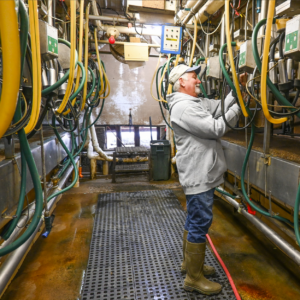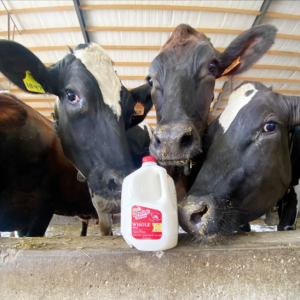
For Leo Avila, maintenance manager at Prairie Farms Dairy in Dubuque, it is not a matter of if, but when, critical equipment stops functioning and how many dollars are lost.
Avila is responsible for running the multimilliondollar dairy coop facility that operates 24 hours per day. Inevitably, one of the hundreds of machines at the facility will experience a critical malfunction. Recently, it was a motor in one of the milk homogenizer processing lines. “It just quit,” Avila recalls. “I got the call at midnight, and we worked nonstop to fix it by 4 p.m. the next day. We lost 16 hours of production, about 20% of that day’s production, translating into about $60,000.”
Avila knew there had to be a better way. Twenty years ago, at a conference, he heard about “predictive maintenance,” in which sensors monitor critical machinery and issue alerts about potential problems.
Predictive maintenance has its roots in the post-World War II technology boom, but for decades it was not widely available and was prohibitively expensive. At a recent CIRAS event, Avila learned how simple sensor technologies could be used as part of a predictive maintenance program for key equipment.
Avila explored sensor systems for machine monitoring. Most lower-cost systems provide periodic performance snapshots. However, Avila sought a system that provided continuous data monitoring.

Before turning to CIRAS, the only way Avila believed Prairie Farms could test equipment was to invest in purchasing.
Kirk Haaland, CIRAS project manager, helped Avila rethink ways to reduce the risks of this approach to evaluate their sensor needs and examine the machines.
“Costs for machine shutdowns lasting for hours could run into the hundreds of thousands of dollars. Implementing this equipment would help prevent those unexpected failures to avoid that cost,” Haaland says.
“Kirk helped us see the potential benefits for our machines,” Avila says. “CIRAS provided us with visionary knowledge.”
CIRAS led a two-week sensor pilot at Prairie Farms Dairy to help them evaluate the benefits and mitigate investment risks of technology adoption.
Prairie Farms is now planning to invest $35,000 in a sensor system. It would take only one incident, like the homogenizer’s failure, to recoup those costs.
“We are so thankful for all the help we got from CIRAS,” Avila says. “We had no idea this sensor pilot program was out there for companies to use.”
For more information, contact Kirk Haaland at khaaland@iastate.edu or 515-520-7623.